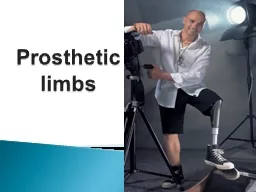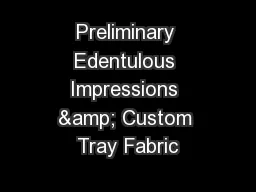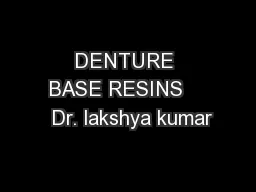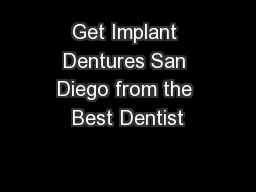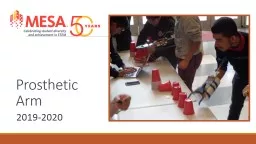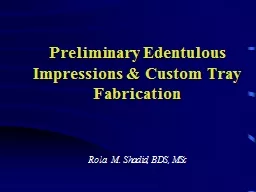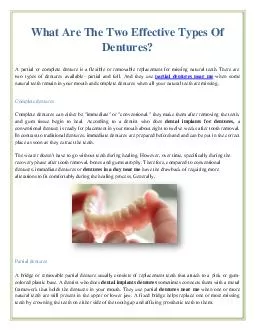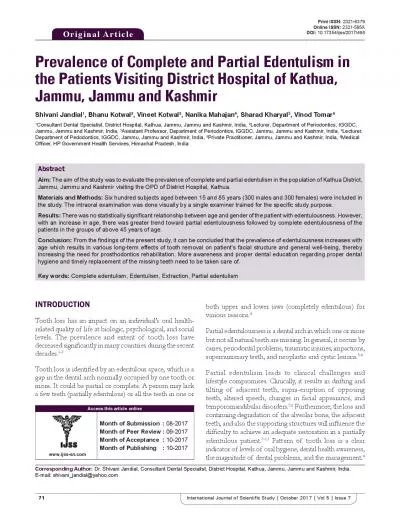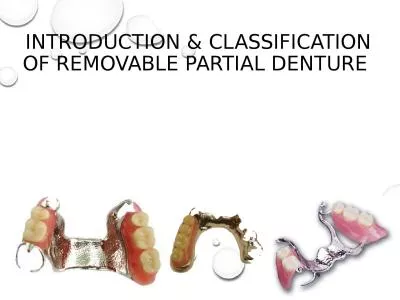PPT-PROSTHETIC REHABILITATION OF PARTIALY EDENTULOUS DENTITIONS BY FIXED PARTIAL DENTURES
Author : norah | Published Date : 2022-06-11
Bridge prostheses components pontic and abutment retainers Technology of mandibular hygienic bridge prosthesis using the Adapta system Its a prosthetic appliance
Presentation Embed Code
Download Presentation
Download Presentation The PPT/PDF document "PROSTHETIC REHABILITATION OF PARTIALY E..." is the property of its rightful owner. Permission is granted to download and print the materials on this website for personal, non-commercial use only, and to display it on your personal computer provided you do not modify the materials and that you retain all copyright notices contained in the materials. By downloading content from our website, you accept the terms of this agreement.
PROSTHETIC REHABILITATION OF PARTIALY EDENTULOUS DENTITIONS BY FIXED PARTIAL DENTURES: Transcript
Download Rules Of Document
"PROSTHETIC REHABILITATION OF PARTIALY EDENTULOUS DENTITIONS BY FIXED PARTIAL DENTURES"The content belongs to its owner. You may download and print it for personal use, without modification, and keep all copyright notices. By downloading, you agree to these terms.
Related Documents


